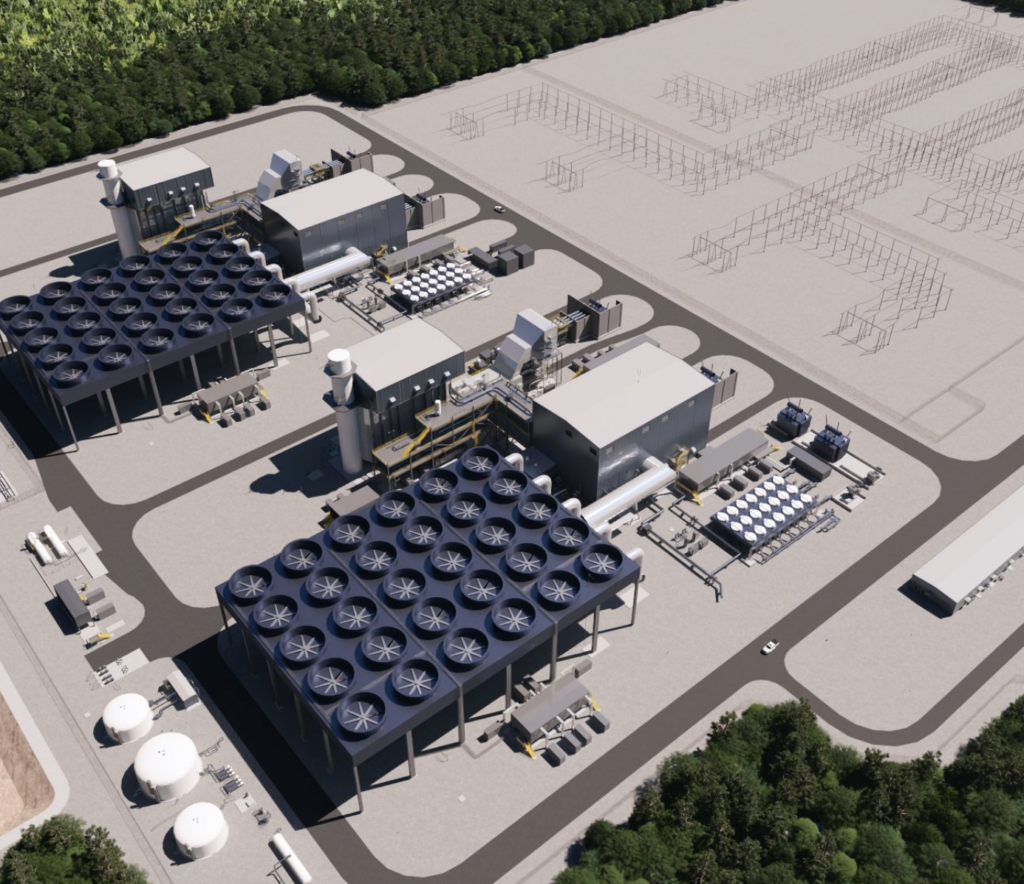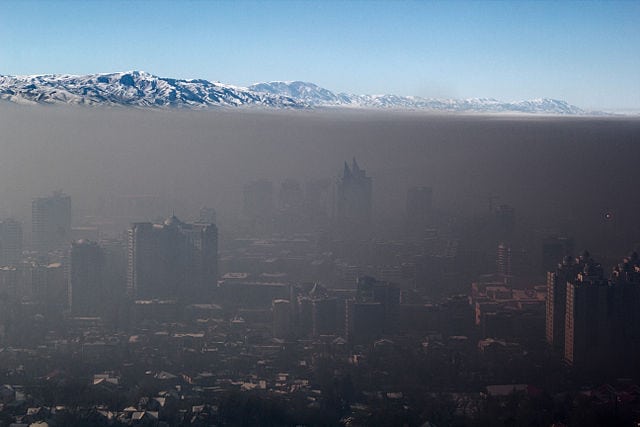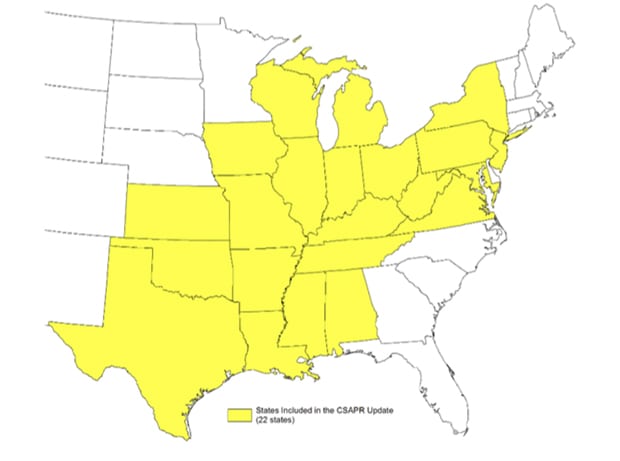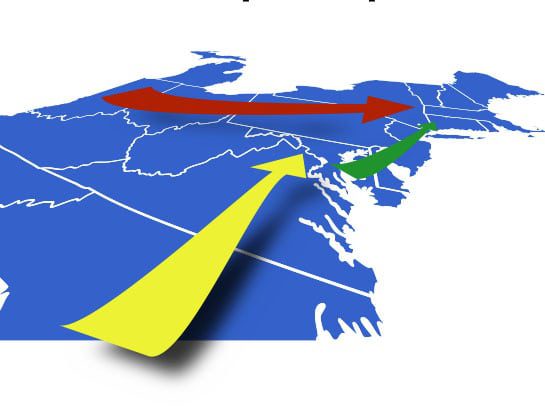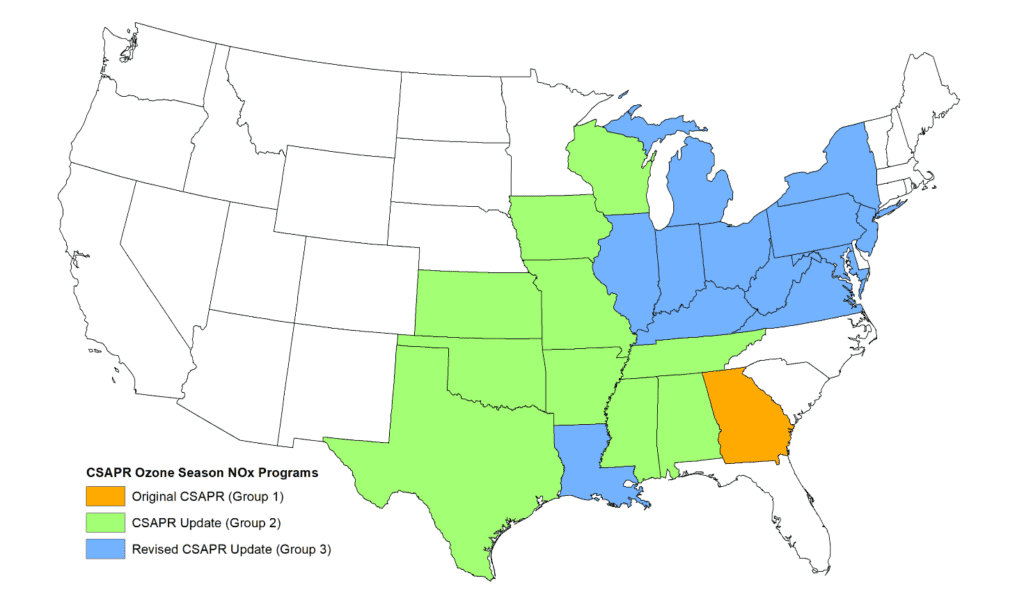Eight northeastern states are again suing the Environmental Protection Agency (EPA) to force the agency to slash emissions of nitrogen oxides (NOx) and volatile organic compounds (VOCs) blowing in from power plants and other sources in nine “upwind” Midwestern and southern states.
The Ozone Transport Region, which was established by Congress under Section 184 of the Clean Air Act, currently includes 11 “downwind” states: Connecticut, Delaware, Maine, Maryland, Massachusetts, New Hampshire, New Jersey, New York, Pennsylvania, Rhode Island, and Vermont.
Most of these states have rules or fall under a federal mandate to directly or indirectly require sources achieve reductions of NOx and VOCs, which contribute to the formation of ozone. In 2014—the most recent year for which the National Emissions Inventory (NEI) is available—about 56% of NOx emissions in the U.S. came from on-road and non-road mobile sources. Electric generating units accounted for about 13% of NOx emissions nationwide. The bulk of VOCs emitted were from industrial processes, including solvents (48%) and mobile sources (27%).
States within the Ozone Transport Region are required to submit state implementation plans and install a certain level of controls for pollutants that form ozone, even if they meet ozone standards. States outside the Ozone Transport Region aren’t required to install the same basic controls on a statewide basis, only in nonattainment areas—and even those are sometimes sidestepped using waivers.
The lawsuit filed against the EPA on December 26 by eight downwind states—Connecticut, Delaware, Maryland, Massachusetts, Pennsylvania, Rhode Island, Vermont, and the District of Columbia—stems from a December 2013 petition they filed calling on the agency to add nine “upwind” states (Illinois, Indiana, Kentucky, Michigan, North Carolina, Ohio, Tennessee, Virginia, and West Virginia) to the Ozone Transport Region.
When the EPA took no action on that petition, the coalition of states in October 2016 filed a lawsuit in a federal district court to compel it to act. The states eventually negotiated a consent decree with the agency that required it to approve or disapprove the petition no later than October 27, 2017. On that date, however, EPA Administrator Scott Pruitt denied the petition.
According to the EPA, the final action was based on testimony from 17 speakers at a public hearing and more than 100 comments filed in response to a January 2017 proposal the agency issued to deny the petition. The agency also said that “existing control requirements both within and outside of the [Ozone Transport Region], the agency’s ongoing implementation of the ‘good neighbor’ provision through updates to the Cross State Air Pollution Rule [CSAPR], and the emission reductions achieved pursuant to federal and state programs promulgated pursuant to these and other [Clean Air Act] authorities,” have improved air quality throughout the nation.
To support that claim, the agency said ozone levels nationwide have fallen more than 30% since 1980. It also cited emissions forecasts the Obama administration made public in support of the 2015 National Ambient Air Quality Standards (NAAQS) for Ozone rule that project NOx emissions will decline by almost 20% between 2017 and 2025 in the states comprising the Ozone Transport Region plus the nine “upwind” states. Emissions of VOCs are expected to fall by more than 10% on average over the same period.
The EPA also asserted that other provisions in the Clean Air Act could provide a better pathway for states and the agency to develop a “tailored” remedy that would most effectively address remaining air quality problems under the 2008 ozone NAAQS that were identified by the petitioners.
In their suit filed on December 26, the coalition of “downwind” states urged the U.S. Court of Appeals for the District of Columbia Circuit to review Pruitt’s denial of the petition, arguing that it is unlawful to vacate it.
The office of New York Attorney General Eric T. Schneiderman said in a December 26 statement that modeling and analysis performed by EPA, as well as by states, has shown that interstate transport of air pollution from upwind states outside of the Ozone Transport Region—including Illinois, Indiana, Kentucky, Michigan, Ohio, Tennessee, Virginia, and West Virginia—contributes significantly to violations of the 2008 federal smog standard within the Ozone Transport Region.
“In addition, preliminary modeling demonstrates that emissions in these states, as well as North Carolina, are projected to contribute to violations of the recently updated 2015 federal smog standard in the Region,” the press release noted.
“Millions of New Yorkers are breathing unhealthy air as smog pollution continues to pour in from other states,” said Attorney General Schneiderman. “The federal government has a fundamental responsibility to act. Yet the Trump EPA has abandoned its responsibilities—repeatedly failing to act to control smog pollution that jeopardizes New Yorkers’ health. Attorneys General will continue to act to protect those we serve.”
—Sonal Patel is a POWER associate editor (@sonalcpatel, @POWERmagazine)



